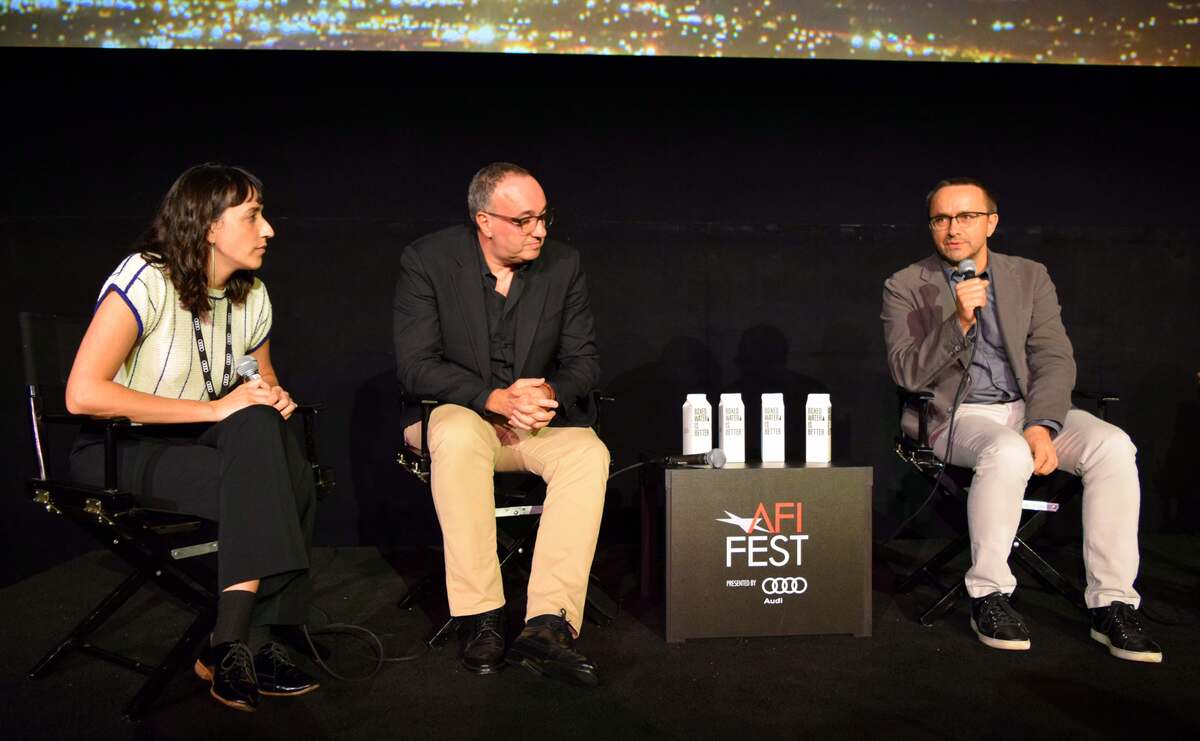
AFI Fest 2017
Los Angeles, California • November 9–16, 2017
by Generoso and Lily Fierro
This is our third time through the American Film Institute’s Festival, a widely and diversely programmed, week-long banquet of unreleased features and shorts, many of which are accompanied by the film’s creators and stars, who hail from every corner of the globe. It never ceases to amaze us that the entire festival is completely free for anyone who wishes to attend, and before we praise or condemn some of the features that we saw, we want to commend AFI Fest for allowing audiences the ability to attend a festival of this quality without the immense price tag that would normally be attached to a festival of this stature.
What set this year apart from previous iterations of the festival that we attended was the programmers’ inclusion of many films that are meta in nature: films that explore the process of artistic creation and films that explore the motifs, themes, and clichés of cinema. We sidestepped the large Hollywood premieres and the galas that accompanied them as well as the short film packages due to our preference for covering feature films from the New Auteurs, American Independents, and World Cinema sections of the festival. This year’s AFI Fest also included a comprehensive Robert Altman retrospective and new restorations of Michelangelo Antonioni’s immortal films, Blow Up and Red Desert (Il Deserto Rosso). We wished we had more time for these repertory screenings because we love having the chance to see any of these films on the big screen, but we focused our coverage on new films from around the world, and as a result, we saw twenty-two films, which we detail in following sections.
As with most years, there are films from directors we already love that immediately make their way onto our viewing schedule the moment that the AFI Fest lineup is announced. We would not have missed Andrey Zvyagintsev’s Loveless (Nelyubov), Laurent Cantet’s The Workshop (L’Atelier), and Claire Denis’s Bright Sunshine In (Un beau soleil intérieur) for anything, and all three directors did not disappoint with their features. There are also celebrated films from international festivals that we have anticipated since hearing and reading about them. Two of these proved why they deserved even more acclaim, and they made their way to the top five of this year’s list. Valeska Grisebach’s Western, the director’s first film in eleven years, was an outstanding meditation on masculinity. And, Jonas Carpignano’s A Ciambra was a bold and unrelenting follow up to 2015’s Mediterranea that created the second panel of his triptych of the Calabrian cities Gioia Tauro and Rosarno.
Below, we present capsule reviews of the twenty-two features that we saw during AFI Fest 2017. We have ranked them from our best to worst and present them in such order.
Loveless (Nelyubov) / dir. Andrey Zvyagintsev
We have been fans of Andrey Zvyagintsev’s work since his 2003 feature film debut, The Return, and since that feature, he has continued surpassing each previous work in quality. It has been three years since his previous, highly regarded film, Leviathan, so we were beyond excited to see his new film, Loveless, the 2017 Jury Prize winner at the Cannes Film Festival. In Loveless, Zvyagintsev follows Zhenya (Maryana Spivak) and Boris (Aleksey Rozin), a soon to be divorced couple, whose constant battling has caused severe emotional trauma to their young son Alexey, who in the midst of his parents’ other ongoing dalliances has gone missing, which is not even noticed by his parents until days later. Loveless then becomes a film that plays with its audience by putting you in the position of the argumentative couple, who seem more concerned with their anger towards one another and seemingly unfulfilling affairs than the welfare of their own child. During the AFI Fest screening’s question and answer session with Zvyagintsev, the director deflected assertions that were made by the moderator that his film is political and clarified that his feature is one that intends to shine light on the social and moral imperatives of a modern Russia that is quickly on the verge of breakdown. Alexey, who only occupies a tiny percentage of the film’s running time, becomes a brilliantly conceived symbol of a generation of Russian citizens who are fanatically striving to retain their own youth, which is the most precious commodity in the face of an uncertain future. We conducted an interview with Andrey Zvyagintsev, which will be published soon in Ink 19.

The Workshop (L’Atelier) / dir. Laurent Cantet
In The Workshop, longtime collaborators Laurent Cantet and Robin Campillo deceptively set up a scenario where you expect a beneficent teacher to help needy adolescents understand themselves through the beauty of writing, which could potentially be extremely sanguine and unrealistic like so many “teacher changing student movies” à la Dangerous Minds and Freedom Writers. However, Cantet and Campillo weave together a film that gets to the essence of writing. Here, writing is not a lofty art form that brings some level of dramatic catharsis, but rather a way to explore and accept one’s own motivations and flaws. Cantet and Campillo use a bait and switch technique that plays on established cinematic clichés in the order to create an interesting narrative, but more so to illustrate the flaws in Hollywood’s films, which stress unreal expectations for a saccharine ending. Cantet and Campillo purposefully lead the viewer through their main character Antoine (Matthieu Lucci), a highly intelligent but brash and combative young man, on several potential clichéd thriller endings in line with the thriller that the students in the workshop are tasked to write. The selection of any of these potential thriller endings for the film is irrelevant, as each ending option only goes as far as to clarify the true purpose of the film: the self-realization that comes through in writing is more important than the craft of writing itself. The Workshop is an expertly conceived film that deftly builds its thesis by confronting the assumptions made by audiences, who might project their own expectations about the beneficence and motivations of teachers and students based on Cantet’s 2008 Palme d’Or winning film, The Class.
Western / dir. Valeska Grisebach
Valeska Grisebach’s first film in over a decade, Western, which was screened in the Un Certain Regard section of the 2017 Cannes Film Festival, is a surprising examination of the conflicting attitudes towards and evolving definitions of masculinity that are derived from predetermined notions of contrasting cultures. In the film, a team of German workers is sent to the outskirts of a small village in Bulgaria to build a hydroelectric power plant. Amongst the team, we are immediately introduced to Meinhard (Meinhard Neumann), who is said to have been a French Foreign Legionnaire who has grown tired of war. Even though he does have some camaraderie with his German colleagues, Meinhard gravitates towards the villagers near his worksite, and he attempts to gain favor within the village as to earn a place there for some semblance of permanence, but perhaps even more so to exist within a community that eschews the trappings of self-serving aggression that historically is attached to Western practices of conquest and expansion. Through the use of a primarily non-professional group of actors, Western accomplishes its ambitious conceptual goals with a documentary style that allows the viewer seemingly unfettered access to Meinhard and the world around him. Grisebach has created, for the central character of her film, a complex and compelling study, as Meinhard’s former existence as a Legionnaire is an excellent device to explain his innate ability to acclimate to different interpretations of masculinity because of the international participation that exists within the French Foreign Legion. Given Meinhard’s desire to be part of a new community, combined with his ability as a Legionnaire to adapt to foreign cultures, will he be able to establish his value, which he believes comes from his ability to commit violence, but, in doing so, will his actions go against acceptable levels of aggression within the community he wishes to serve?

A Ciambra / dir. Jonas Carpignano
In the final scene of Mediterranea, Jonas Carpignano’s impressive feature film debut, we see the protagonist of the film, Ayiva (Koudous Seihon), an African refugee who, since arriving in southern Italy, has tried to play it straight, entering a party at the home of his connected orange orchard boss. This simple act of entry by Ayiva, symbolizes his acceptance of the criminal code that governs his region. When we begin Carpignano’s follow up film, A Ciambra, we are reintroduced to Ayiva’s young friend from Mediterranea, Pio (Pio Amato), an illiterate adolescent from a Romani community who peddles stolen items. In A Ciambra, Pio lives with his family and does what he can to help out, including the aforementioned small-time thievery and stealing electricity for his home so that his family can dodge bills they cannot afford. As for Pio and Ayiva, despite their ethnic allegiances, they have become close friends with Ayiva assuming a protective role over Pio, as Pio’s older brother Cosimo (Damiano Amato) begins serving time in prison, a place where he begins to look at the ethnic divide in a different way. What we admire the most about A Ciambra is the film’s unwillingness to compromise its realistic vision of a Romani community in contemporary southern Italy and how that community functions in a static environment between established Italian nationals and a new migrant group, African immigrants, who draw some of the ire away from the Romanis. Though by genre definition, this is a crime film, we have come to realize that A Ciambra is more of a film about the stigma attached to immigrant groups from outside and from inside of their communities. We see three groups in the film: the Calabrians, the Romani, and the Africans, and we learn their perceptions of each other and themselves from their interactions.
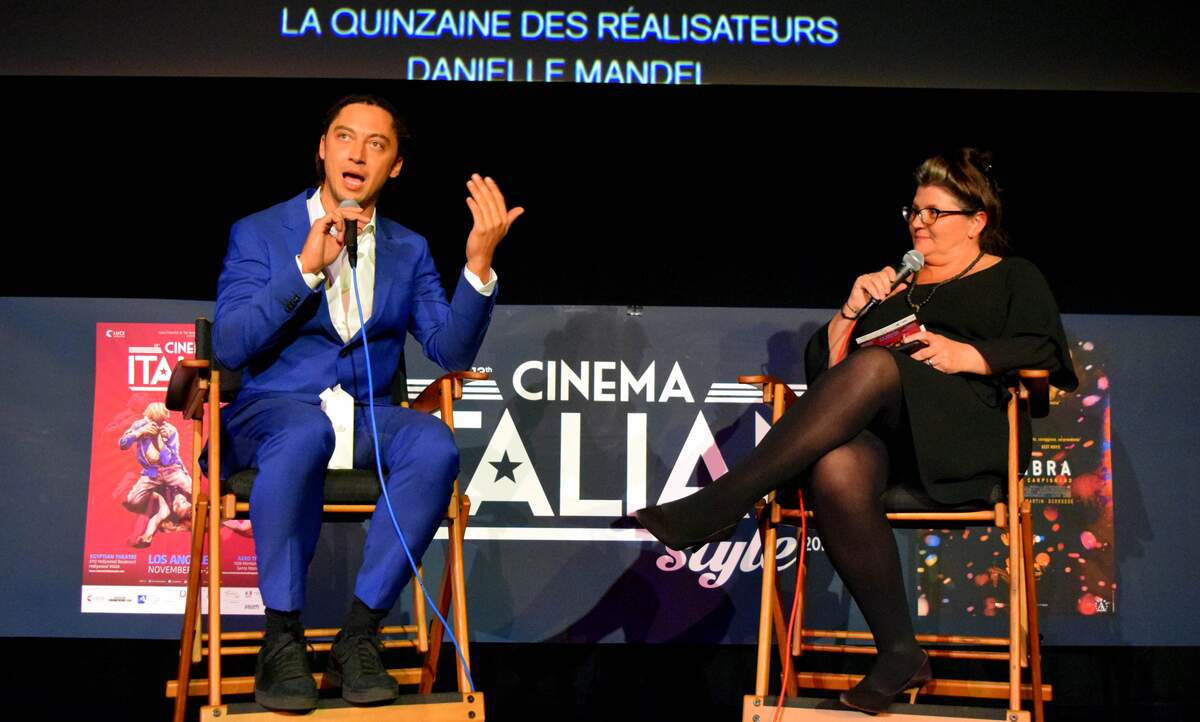
Bright Sunshine In / dir. Claire Denis
In Bright Sunshine In, Juliette Binoche plays Isabelle, an older visual artist whose success in her career fails to translate into her inter-personal relationships. On the surface, Bright Sunshine In looks like an exploration on fleeting and turbulent love, an exercise on a quintessentially French premise, but Claire Denis uses love and relationships to form an intricate conceit about the life, interactions, and career of an aging female creator. On one level, Bright Sunshine In is about how an older female actress presents herself to the people and characters she meets in life, on stage, or in cinema impacts the course of her interactions. Throughout the film, Binoche comedically dresses as a caricature of a young French woman. She’s always in a miniskirt that barely meets the top of her audacious thigh-high boots, and whenever we see Isabelle’s outfits in Bright Sunshine In, we see a manifestation of Binoche the actress’s and Isabelle the artist’s need to prove to outside eyes that they still can carry the energy, beauty, and vitality of their youth. As much as the film is about the aging actress, it is also about Claire Denis herself as a female director navigating through the archetypal male characters in French cinema and the male actors who play them, which is why the film must end with scenes from Denis’s longtime collaborator Alex Descas and the iconic Gérard Depardieu. Bright Sunshine In appears like a lighter film for Denis, but it is a completely exemplary one because of its ability to show the creative process and experience for aging women in cinema who have seen the past and contributed their own work to it, but want to continue to progress, and for that it is a film that only Denis can present because her grace, honesty, and perceptiveness are evident throughout.
Let the Corpses Tan (Laissez bronzer les cadavres) / dirs. Hélène Cattet and Bruno Forzani
Before we say anything else about Hélène Cattet and Bruno Forzani’s Let the Corpses Tan, let us say this: it’s not perfect by any means, but it is one of the most conceptually and visually daring films we saw at AFI Fest 2017. Cattet and Forzani’s latest blood-soaked feature is, at times, an outstanding display of ideas that draws visual and aural conventions from everything from low budget Euro-crime films of the 1970s to Alejandro Jodorowsky’s El Topo. Based on Jean-Patrick Manchette’s landmark novel of the same name that re-defined police stories, Let the Corpses Tan uses a violent heist as the galvanizing moment in the narrative, but the film is less about why the crime was committed and more about what each character sees, feels (in a tactile way rather than an emotional way), and hears as he or she has to deal with the consequences. As thus, there is an overwhelmingly impressive dedication by Cattet and Forzani to construct meticulous shots of the actions, big and small, of each character, which makes every scene in the film palpable. We can hear and see the paint that Luce (Elina Löwensohn), the owner of the home that doubles as the film’s stage, shoots onto a canvas. We can feel the sun beating down on the characters as they move around Luce’s sparse and desert-like property in Corsica. We see and hear shots fired from each perspective. We can even smell the pee that is part of Luce’s performance art. This action-focused approach bypasses any character development and exploration, but keeps you fully engaged because you would like to see, hear, and feel what is next, especially because Cattet and Forzani never present a less than intriguing scene. As part of the sensory explosion in Let the Corpses Tan, the directors include scenes from surreal performance artwork from Luce, and these moments emphasize why you should see the film: Let the Corpses Tan is a showcase of how the motifs that we know from genre cinema, when included and expanded in similar and contrasting contexts, can form their own kind of performance that is analogous to Luce’s strange, but also reference heavy, performances.
Let the Corpses Tan is a dazzling spectacle, and even if there are no characters and no firm narrative to hold onto, you’ll be mesmerized by all the sounds and images of liquid gold slathered on bodies, lamb meat being grabbed, bodies being beaten, and gunshots fired in close range and through windows interspersed with close ups of sweaty, furtive glances. As you can tell from that description, some of the scenes in the collage of Let the Corpses Tan may be overly masturbatory or fetishistic, which without key characters are made even more so, but as long as you give up trying to understand why this is all happening before you, you’ll have fun, too much fun experiencing this film.
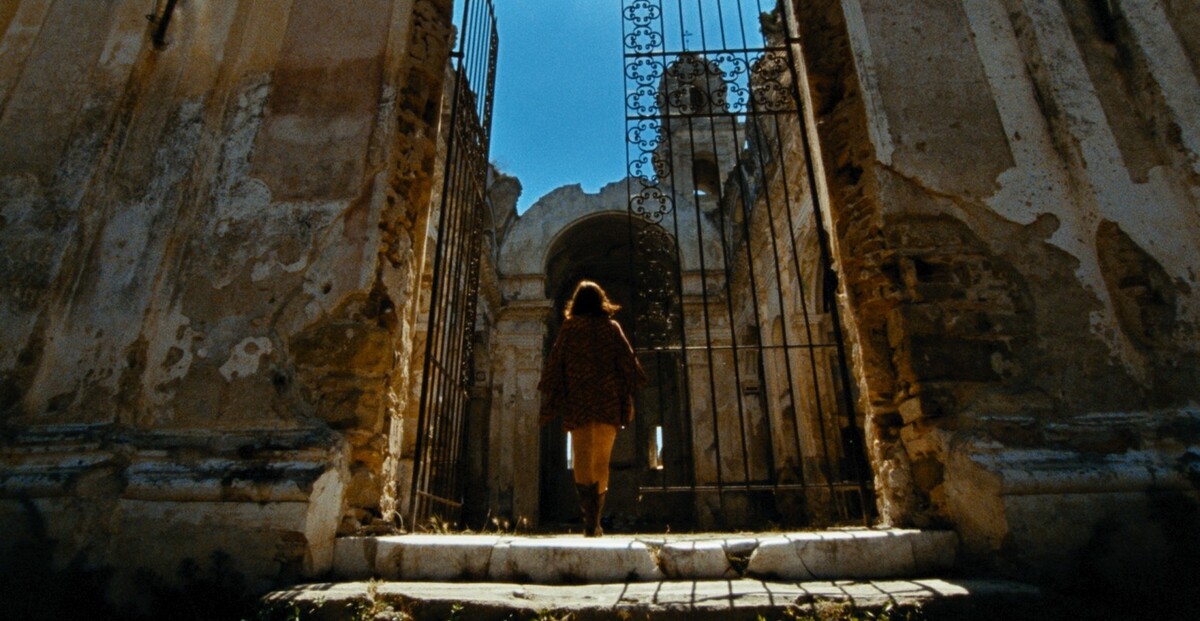
Pendular / dir. Júlia Murat
Whereas Joanna Hogg’s Exhibition is solely focused on what it means to see and show art from a creator’s and an audience’s perspective, Pendular is more self-contained in its discourse on the reconciliation between space and body. At the start of the film, we see a couple, the woman, a dancer, and the man, a sculptor, forming a line of separation in an abandoned factory that doubles as their home and studio. From this image of the line that splits the man and the woman’s working spaces, we immediately understand that invasion of space will become an issue—for him, the space needed to build his sculptures, and for her, the physical space of her body, the key tool of her work. As Pendular proceeds, the dancer and the sculptor battle to expand their respective physical spaces of performance/creation, and as a result, we see what happens when their need for expansion and creation in their work bleeds into the confines of their human relationship. Beyond our sculptor and dancer, there is a third creator who also wants space: the filmmaker. In conversations in Pendular, there are constant references to mainstream cinematic language and video game play. Then, in one brief moment, we see the dancer move towards the couple’s personal collection of films, which contains multiple works from Tsai Ming-liang and Claire Denis. All of these references to external media serve to try to relate the experience of the sculptor and dancer to known properties for the audience, but all of these references are interruptive and brief, almost in a jarring way, showing the filmmaker’s own battle for narrative space in the film itself in order to set cinematic language anchors for the viewer. Thus, Pendular emerges as an exploration into the experimentation and the struggle to find harmony between three artists: dancer, sculptor, and filmmaker, and in the closing, when the three finally come together, the outcome is a hypnotizing visual exhibit of space, body, and movement. Given the intricacy required to convey the concepts in Pendular, the film de-personalizes its central characters, but more moments of their personal interactions would have given more fluidity and spontaneity to the film. Regardless, Pendular ranks high on this list because it underscores the ability of cinema to provide a dialogue about art, of multiple forms, with time, images, and sound.
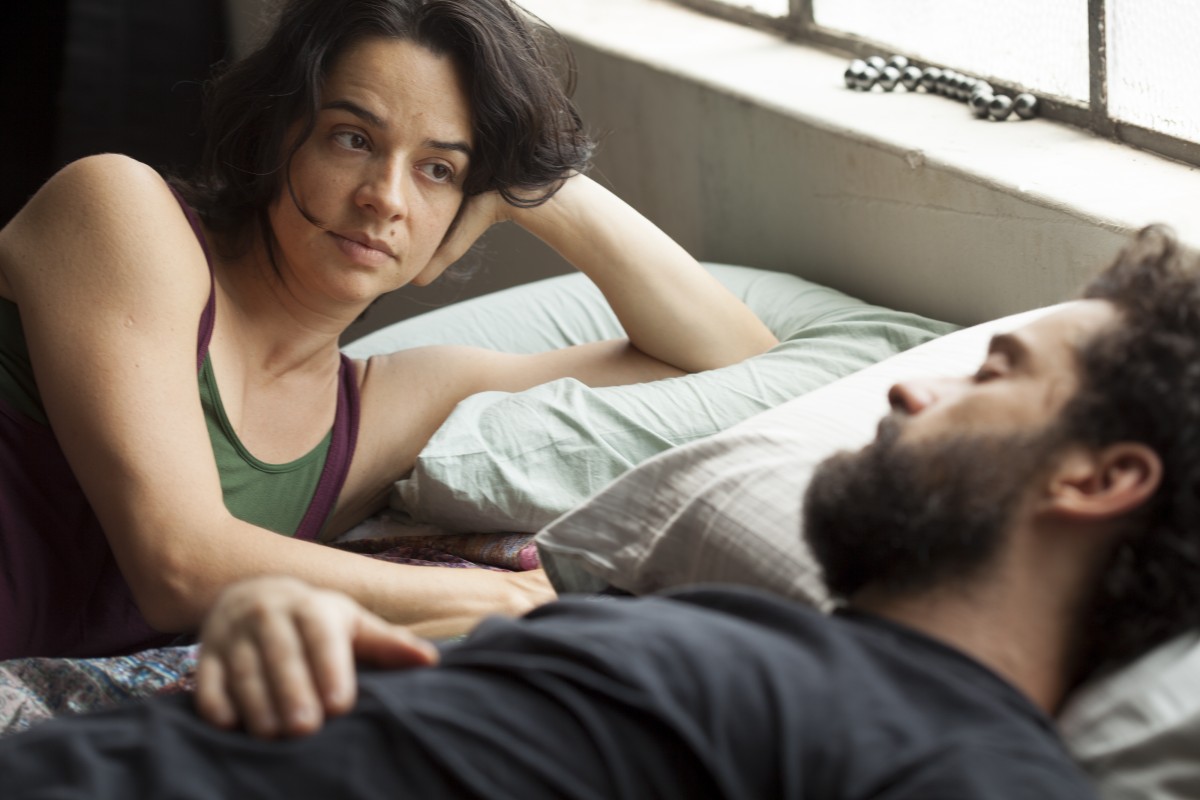
El Mar La Mar / dirs. Joshua Bonnetta and J.P. Sniadecki
With El Mar La Mar, J.P Sniadecki and Joshua Bonnetta attempt to weave together a multi-dimensional portrait of the Sonoran desert, which is a physical space that is the subject of the highly political conflict of illegal immigration. As landscape, the desert has a grand and desolate beauty to it, a beauty that so many artists have gravitated to and mystified in their own explorations of the American southwest on their journeys of self-reflection and self-actualization. Playing on this entrancing and grand beauty and people’s need for some connection to it, Sniadecki and Bonnetta attempt to capture the essence of the Sonoran desert from its physical form and from its stories, as told by the people who are entrenched in the place: border patrol guards, activists, illegal immigrants, and nearby residents. El Mar La Mar excludes the faces of our speakers, which gives each voice an objective distance from the political topic of illegal immigration, providing a more comprehensive view of the human emotional and psychological perception of the desert. For our speakers, the Sonoran is not a magical, romanticized terrain: it is a place filled with danger and tragedy for all involved, and we learn this without any melodrama or pathos, for we never get any opportunity to learn each speaker’s identity. Intertwined in the construction of the human stories of the Sonoran, we see different visual perspectives of the desert, sometimes through a more documentary eye and other times through an experimental cinema eye, which together allow us to construct the physical space, but without sweeping landscapes or any image to convey the grandioseness that many people and artists have used to represent that part of the world. Together, these constructions of human emotional and psychological perception and physical perception present a fascinating approach to understanding the complexity of a place, but unfortunately, the approach does not completely maintain its steam throughout the film. The best parts of El Mar La Mar occur in the first half of the film, where this technique of defining a place and its people is at its finest work. However, by the end, when a poem is read to dark images of the desert, the abstraction away from the place and from the people’s stories pull the film too far conceptually away from its subject. Sniadecki and Bonnetta de-beatify the terrain and detach the people who live in it to present the truth behind the struggle in a place, and for their commitment to this approach, they do deserve praise, especially in a day and age where people are seeking experiences and enlightenment in the desert lands of the southwest without understanding what the same spaces mean for the people who have to try to survive there.
The Day After (Geu-hu) / dir. Hong Sang-soo
We decided, as did AFI Fest, to schedule back-to-back, two (The Day After and Claire’s Camera) of the three Hong Sang-soo features for 2017 (for the record we saw his third feature, On The Beach at Night Alone less than a week after the end of the festival). The Day After is more in line with the more recent Hong Sang-soo awkward, cinematic squirm fests of relationship maintenance. Here, Kim Bong-wan (Kwon Hae-hyo), the Hong Sang-soo character, is an aging book publisher who is well on his way to destroying his marriage by having an outside relationship with a younger woman who was of his employ, which as we all know by reading recent press accounts, is eerily close to the real-life experiences of director Hong. After Kim’s paramour/employee leaves the company, our book publisher hires a highly regarded new employee (played by Hong’s real-life girlfriend Kim Min-hee), who on her first day, becomes the frontline in the day of reckoning for her brand new boss. Like Claire’s Camera, Yourself and Yours, and so many other of Hong’s more recent films, the director’s personal life is adapted on screen for all to see and fear. He may be the single most honest and sociopathic director of this century so far, second only to Nuri Bilge Ceylan in terms of self-incrimination through the depiction of his own bad behavior. With his nation pointing fingers at him by the millions, Hong offers little apology here for his transgressions, and takes you along to witness his honest, funny, and careless journey through his middle-aged years as a creator.
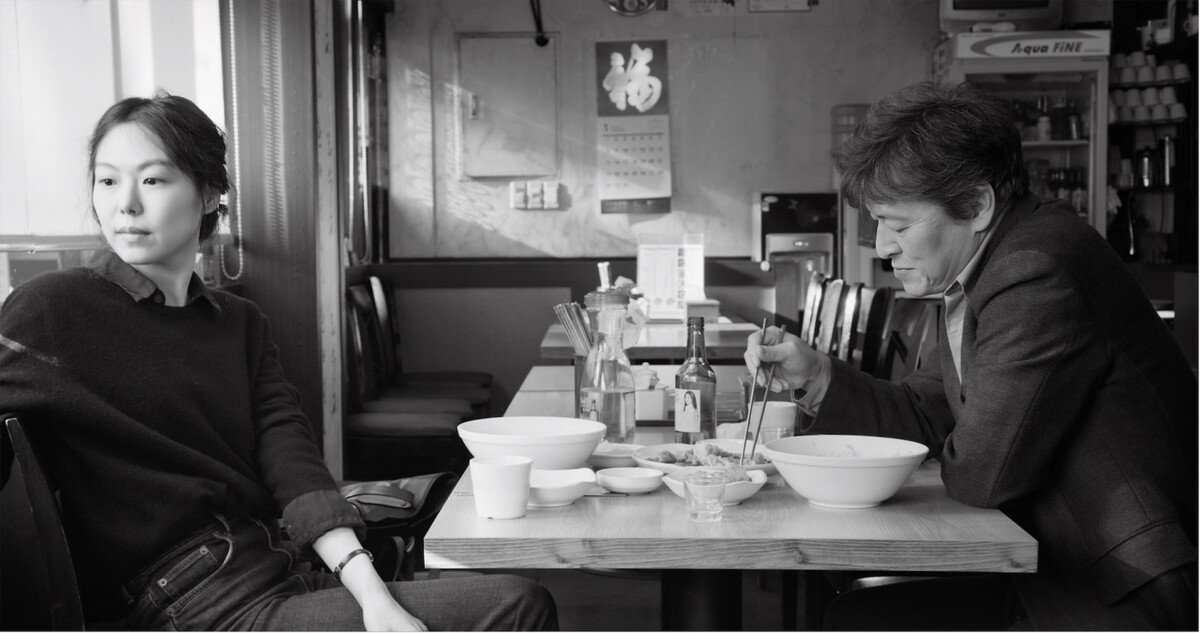
Good Manners (As Boas Maneiras) / dirs. Marco Dutra and Juliana Rojas
Longtime collaborators Marco Dutra and Juliana Rojas gave us one of the best surprises of this year’s AFI Fest, Good Manners, a smartly constructed, occasionally funny, and touching story of Clara (Isabél Zuaa), an economically struggling nurse from the outskirts of São Paulo who becomes the caregiver for the late-term pregnant Ana (Marjorie Estiano), a woman of questionable means who is in need of guidance, care, and affection before the birth of her first child. For Clara, Ana is a handful to deal with at first, as the soon to be single mother puts on airs of sophistication for the purpose of hiding her dubious background, which is soon revealed after Clara witnesses a rather ghastly sleepwalk escapade by Ana through the city center. Clara is indeed horrified by what she has seen, but then is still oddly drawn to the affections of Ana. Due to circumstances beyond her control, Clara becomes a guardian of Ana’s child, Joel (Miguel Lobo), who is indeed a werewolf. Aspects of the child’s rearing are done in a tongue-in-cheek manner that, to Clara and Joel, appear as normal, but are challenged by the interference of others. Good Manners uses the werewolf myth to make relevant comments about the current state of class, gender, and race in Brazil, but do so in a way that sidesteps pretension, as they mask their social comments through the horror genre in a similar way that Alice Lowe’s underrated 2016 feature, Prevenge, does by making the extreme and even comedic moments the focal point as a sleight of hand method to deliver its core message, which in Dutra’s and Juliana Rojas’s film, is essentially that Clara and Joel, who through no fault of their own, are failing to find a place in contemporary Brazil.
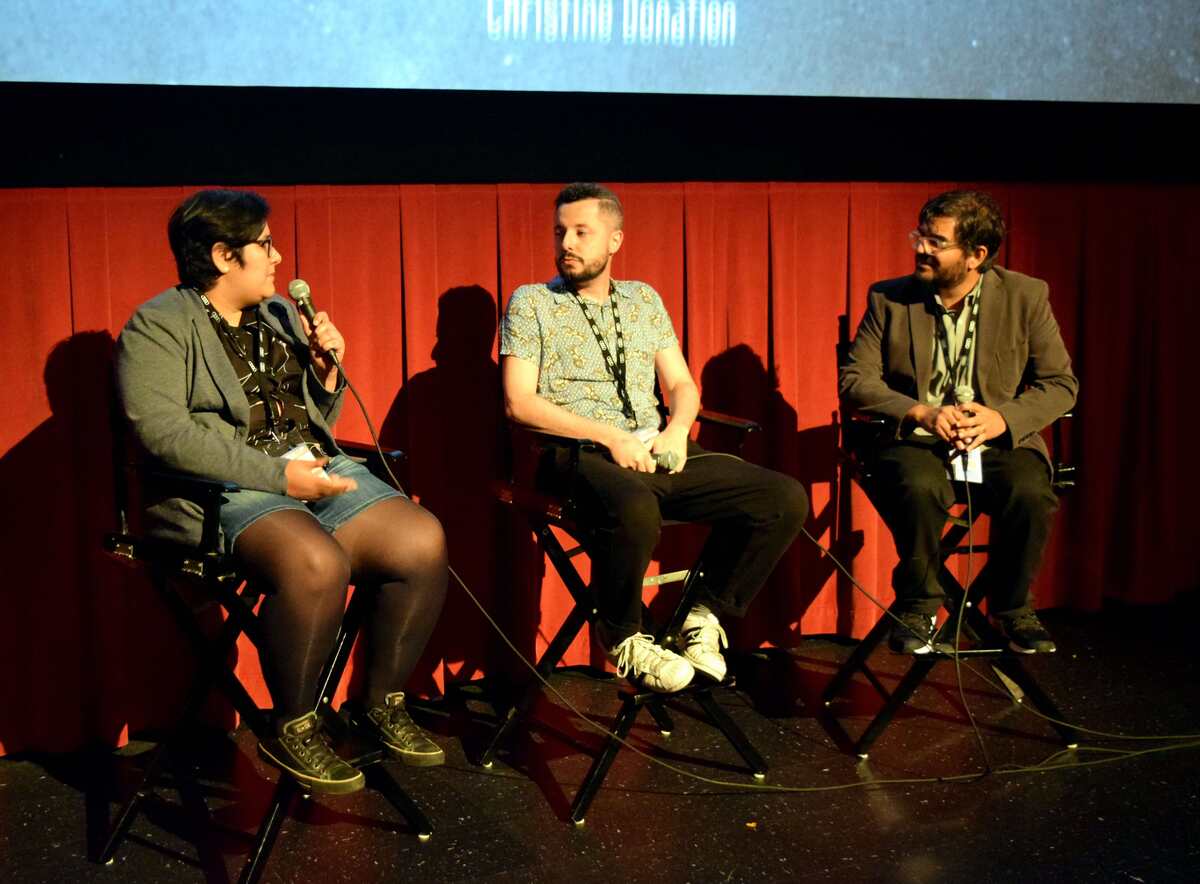
California Dreams / dir. Mike Ott
Shot in multiple vast spaces between Los Angeles and Bakersfield, is director Mike Ott’s hallucinatory view of what we have come to describe as the “Hollywood affliction:” a disease where people of varying ages will obsess and risk everything they have to try get to Hollywood to peddle whatever idea they throw out into the ether in the hopes of making them famous. Alongside this condition, there’s also a syndrome where reality and fantasy merge into one, and the actors/subjects of California Dreams show many signs of this syndrome, and Ott plays with it in the film itself. First, we meet Cory Zacariah, who is an aspiring actor who is trying to raise the money to go to Berlin to audition for a film. We also meet Kevin, a Dog the Bounty Hunter impersonator, who owns a storage company, Carolan, who lives in her car and dreams of being a writer, Patrick, a shy 28 year-old who has never kissed a girl, and Neil, a screenwriter who wants to write a film, TV show, video game, or basically anything to get to Hollywood (he also has a deep love for Taco Bell). When watching Ott’s film, you are constantly reminded of the fact that none of these people actually live in Hollywood, as they are people of modest means or are obligated to their towns due to financial or familial concerns. This factor of living in close proximity to a place where their dreams could come true only fuels the desires of our five protagonists, and even though their chances at times seem slim, Ott does not exploit these people for an easy chance to ridicule them as so many films of this kind have done in recent years. Nothing reminded us more of the Ott’s unusual, humanistic approach than a cameo near the end of California Dreams by actor/director Mark Borchardt, whose similar aspirations in media were once taken advantage of in 1999’s American Movie, a documentary that is seemingly edited together for the sole purpose of highlighting Borchardt’s shortcomings for a laugh during his production of a low-budget horror film. In Ott’s film, Borchardt has a small role as an enthusiastic cab driver, who upon finding out that his passenger is headed to Berlin to make a film, jumps on the chance to enlighten his customer on the greatness of German New Wave cinema. It is a sweet and honest moment where a genuine love for cinema is professed that flows naturally as so many of the conversations do in California Dreams.

Claire’s Camera (La caméra de Claire) / dir. Hong Sang-soo
For the second of this year’s three Hong Sang-soo cinematic explorations into his own current real-life matrimonial woes, the director assumes the more Jungian approach that he has employed in the past, but with a bit of an Eric Rohmer feel this time. Set in Cannes, we find the Hong stand-in, Jin-young Jung (So Wansoo), a film director who is failing to balance the relationship between his press/sales agent/girlfriend Nam (Mi-hee Chang) and her underling, Jeon (Min-hee Kim), with whom the director has had an affair with recently. Into this picture arrives the always brilliant and charming Isabelle Huppert as the titular Claire, a French teacher who encounters our romantically careless director while she is at the Cannes Film Festival in support of a friend who has a film in competition. A whimsical series of comedic coincidences ensues where the truth contained within the photos that Claire snaps connects and exposes the relationships between the director, his press agent, and the recently fired assistant. Perhaps the shortest of Hong’s films in the last two years, Claire’s Camera is a comedy that is no less delightful and poignant due to Hong’s consistent, brash honesty about his own personal romantic shortcomings.
The Other Side of Hope (Toivon tuolla puolen) / dir. Aki Kaurismäki
Oh, how we missed Aki Kaurismäki, who has taken a four year break before making the second feature of his ongoing “Port City Trilogy,” The Other Side of Hope, which begins with the soot covered Khaled (Sherwan Haji), a Syrian refugee who stows away to Finland in a coal cargo ship in search of any land that is free of war. Upon arrival in his new country, Khaled goes the official route at first and heads to the immigration office to apply for asylum. There, he is put through a process that requires him to provide a painful retelling of the horrors that he had to endure while escaping his homeland, but sadly even after giving such harrowing testimony, he is denied temporary residency in Finland. Found hiding in garbage after escaping a refugee receiving/detainment center, Khaled violently encounters Wikström (Sakari Kuosmanen), a gambler and recent restaurant owner, who, after a quick scuffle, offers Khaled a job and the chance at illegal residence while Khaled desperately searches for his sister, Miriam, whom he lost during their forced exodus. Like in Le Havre, here, Kaurismäki clearly defines governmental response to immigration and refugee issues and offers the viewer the opportunity to understand that during such desperate times, a creative alternative must be sought out to guarantee the safety of people who have come seeking peace from a land of conflict. As for the execution of the film, though enjoyable at points, The Other Side of Hope does not come together in the same awkward, yet effortless-seeming style that balances the tragic and comedic elements seen in Kaurismäki’s earlier films such as A Man Without a Past or Le Havre. We found the restaurant scenes, in particular, offered little, but easy laughs that have only a small bearing on the plot. Still, The Other Side of Hope is good film, which does not over labor its central point, but does unfortunately lose focus on its central character who is more than happy about being in a place that is violent, but not as violent as place he came from originally.

A Season in France (Une saison en France) / dir. Mahamat-Saleh Haroun
Throughout his over twenty year career as a director, Mahamat-Saleh Haroun has brought to cinema the stories of his homeland, stories, which in many cases, involve the difficulties of acclimation encountered by African refugees in Europe. With his new feature, A Season in France, he revisits not only the issues that face Africans in Europe, but also the theme of fatherhood as he did in his 2010 Cannes Jury Prize winning film, A Screaming Man. Haroun’s new film is centered on Abbas (Eriq Ebouaney), an African high school teacher and scholar from the Central African Republic whose wife is killed and who is then forced to leave his war-torn country with his two pre-teen children, a son, Yacine (Ibrahim Burama Darboe), and a younger daughter, Asma (Aalayna Lys), and their philosophy professor uncle, Abbas’s brother Etienne (Bibi Tanga), to become refugees in France. Abbas and Etienne find employment as a fruit vendor and security guard respectively and go about their lives as best as they can while they nervously await word on their petition for asylum. Legendary actress Sandrine Bonnaire stars as Abbas’s co-worker, Carole Blaszak, who was once a refugee herself from Poland, but one who arrived in France during a different, less tenuous time of immigration concerns. Abbas and Carole fall in love, but the grim reality of Abbas’s family’s potential deportation looms over all of them. Haroun’s screenplay and direction create sympathetic characters and an unpredictable narrative, but the film suffers from more than a few moments of heavy-handed dialog and plot devices that sacrifice reality for drama, which are unnecessary for a film that contains such well-crafted characters and actors whose performances effectively humanize the plight of African immigrants seeking asylum in contemporary France.
Hannah / dir. Andrea Pallaoro
Putting aside the magnificent performance from Charlotte Rampling, the central figure of Andrea Pallaoro’s minimalist narrative succeeds only in framing the performance of its lead actor. Hannah is a story of a woman later in life who has committed the sin of loyalty towards her husband, who has committed a crime against a child. We do not know what this crime is, and we do not understand the level of public awareness of this crime, but it is notable to the degree that Hannah is forced to retreat from society and her own son, who has rejected her for her potential involvement in the crime and her passiveness towards her husband’s guilt. Though the level by which Pallaoro moves deliberately and slowly to examine the day to day life of Hannah is somewhat appreciated, the construction of the narrative with an almost crime film absence of factual information about the malfeasance that has occurred leaves little in terms of empathy for the viewer towards the film’s central character. A real trouble spot for Hannah’s character development is her relationship with Nicholas, the blind adolescent son of her affluent employer. Without a better understanding of her potentially complicitous involvement in her husband’s crime, how are we supposed to interpret the physical interaction between Hannah and Nicholas, and what are we supposed to have as our takeaway from all the other moments of unease while in the presence of young children? When photo evidence is accidentally discovered by Hannah during repairs to her apartment, we just cannot adequately assess whether she is appalled and shocked by proof of her husband’s guilt or if she is just simply disgusted of being reminded of it. Hannah’s journey to escape the recrimination of her involvement in her husband’s criminal act eventually becomes an uninteresting exercise rather than an empathetic examination of someone seeking emotional freedom and self-actualization.
April’s Daughter (Las hijas de Abril) / dir. Michel Franco
Actress Emma Suárez, who turned in an award-winning performance as the titular character in Pedro Almodóvar’s 2016 film, Julieta, where she plays a mother who is trying to make sense out of her life, here, plays a vastly different kind of maternal figure. In April’s Daughter, Suárez plays the title character once again, this time of Abril, an affluent Spanish woman who travels to the oceanside town of Puerto Vallarta upon hearing that her seventeen year-old daughter Valeria (Ana Valeria Becerril) is about to give birth to her first child via her seventeen year-old boyfriend, Mateo (Enrique Arrizon). Upon arrival in Mexico, Abril’s true self quickly starts to emerge, that of a megalomaniac, who clearly regrets her decision to have children at a young age and who now exerts her wealth to rectify her own mistakes by altering the lives of Valeria and Mateo. We appreciated the pace of the first third of Franco’s feature, but the rapid changes that occur in terms of Abril’s methods of madness are too stark against a film that never achieves the Almodóvar-esque frenetic style that is a necessary framing device for such a rapid progression in character development, making April’s Daughter seem thrown together like any episode of a telenovela. This approach might have very well been Franco’s intention, for asking Emma Suárez to repeat a slightly similar maternal role to the one she played in a superior, recent Almodóvar film may serve as a way to form an indictment of the poor overall quality of Mexican popular media, which might make more sense as Franco’s motivation to make this hackneyed family drama.
In the Fade (Aus dem Nichts) / dir. Fatih Akin
It has been thirteen years since Fatih Akin wowed audiences with the intense character portrait of two fractured lives from different cultural backgrounds crashing into one another that the director created with his film, Head-On. Similar in subject, but not execution, Akin’s newest effort, In The Fade, focuses on a relationship that, from the earliest moments, we perceive as troubled as our couple is being wed while the groom is still in prison for a drug trafficking crime. Cutaway a few years, and the happily married couple is living and working in Akin’s hometown of Hamburg, where the pair are raising a young son before tragedy strikes. Based on a true story of a German woman who is still working to find justice and solace in the wake of a racially motivated bombing that killed her husband and young son, In the Fade sadly plays out like any television police procedural. Much is made of Diane Kruger’s Palme d’Or winning best actress performance as the widow, Katja Sekerci, but little of that performance was affecting for us due to the overly sharp, Hollywood-style editing that stifles any moment of real pain or emotion. Another issue is the clichéd use of flashback that is supposed to compensate for the lack of familial character interaction past the fifteen meager minutes of screentime at the beginning of the film where we actually see Katja interact with her husband and child in real time. In The Fade fails at alerting attention to a problem due to Akin’s failure to allow the viewer the appropriate access to the protagonist’s past, especially the dubious pre-prison life of Katja’s husband, that would allows us to understand her thought process more clearly when she seeks revenge. Though Kruger does the most that she can with her character, what remains after poor editing choices and overdramatic dialog is a fairly standard revenge film.
Man of Integrity (Lerd) / dir. Mohammad Rasoulof
Mohammad Rasoulof’s drama about an embattled goldfish farmer who has developed a feud with local gangsters is failed by a predictable script that appears to have been produced primarily for Western audiences. Case in point, is a moment in the film where our goldfish farmer, Reza (Reza Akhlaghirad) appears to be shocked when a non-Muslim is banned from being buried in a Muslim cemetery, as if Reza, who was born and raised in Iran, would not have already seen this situation played out countless times in his homeland. There are multiple scenes in Man of Integrity where comments are made against the current social and governmental situation in present day Iran, but they are usually delivered in a ham-fisted and over-explained fashion that takes the viewer out of any potential moment where a performance could create empathy for any of our characters’ dire situations.
Marlina the Murderer in Four Acts / dir. Mouly Surya
Why do we feel compelled to exhibit female strength by placing female characters in traditionally male centric roles? The references to western genre film are abound in Mouly Surya’s uninspired film that follows our title character (played by Marsha Timothy), who cops the silent gunslinger persona after she murders a gang of thugs who sexually assault her. After her killings, Marlina comically takes the disembodied head of the gang’s leader on a journey to the police station, where she hopes to explain her actions. On the road, she encounters her pregnant friend Novi (Dea Panendra), who is simply trying to reunite with her child’s father when friends of the recently murdered gang hijack their bus in search of Marlina and the head of their leader. The true failing of Surya’s film is the decision to center the film on Marlina, who acts out the role of a traditional western anti-hero and not Novi, who turns in a bravura performance as a woman who takes the greatest risk to help a friend. Surya’s decision to nuance western genre tropes by merely changing genders for some sense of irony comes off as just a banal gimmick that tires after the first twenty minutes.
Winter Brothers (Vinterbrødre) / dir. Hlynur Pálmason
In an AFI Fest schedule that gave us a personal and cultural exploration into masculinity in Valeska Grisebach’s superlative film, Western, we cannot applaud the shoddy construction of Hlynur Pálmason’s Winter Brothers. Meaninglessly extravagant in its imagery and in its audacious moments, we glean little through our observation of this group of ash-covered Danish workers who perform varying acts of wacky machismo on one another. For all the noise and imagery, there is little substance, for we understand nothing about the lead protagonist Emil’s character, which if given any level of solid construction, could give the film some sense of purpose beyond what exists here: a patchwork of poorly flushed out ideas that ends up as a tiring exercise of strung-together textures.
A Fantastic Woman (Una Mujer Fantástica) / dir. Sebastián Lelio
During the Q&A with lead actress, Daniela Vega, after the AFI screening of Sebastián Lelio’s ultimately disappointing new feature, A Fantastic Woman, a clue was given as to why the film failed to create an emotional connection with us, despite an intense performance from the newcomer Vega. As she described her feelings towards reading the script that Lelio sent her for A Fantastic Woman, Vega uttered the following line, “I was fifty pages into the script, and it was all about my character Marina’s love interest, Orlando (Francisco Reyes), so, I had some second thoughts.” In the cut of the film that we saw, the character of Orlando barely has ten minutes of screentime, so we have to wonder if Lelio once intended to create a much more thorough portrait of the relationship between Vega’s character, Marina Vidal, and Orlando so that the audience would better understand Marina feelings for her partner and her state of mind when he passes away. Instead of witnessing that relationship first hand to empathize with Marina, we only see scenes where Marina is upset by Orlando’s family as they deny her the right to mourn Orlando and where she practices boxing to vent her frustration. In A Fantastic Woman, we only get dramatic devices to represent Marina; we get no character examination, which Lelio is more than capable of, as seen in his widely celebrated film Gloria. Another rift between the viewer and any emotional connection comes by way of the failing of the editing style, which removes space during scenes where Marina’s emotions could be absorbed by the audience in favor of a cut to the next scene. Much respect has to go to Vega in her first lead role in a motion picture, and we feel that the worst failing of A Fantastic Woman was its missed opportunity to capitalize on the actress’s raw talent. Because of the film’s shallow character construction and rapid editing, we only get glimpses of Vega’s abilities—we never see them fully exhibited. We both highly regard Lelio’s previous feature, Gloria, which was a top ten film for us in 2013, and we were very disappointed that A Fantastic Woman was not given the same level of breathing room and character development that made Lelio’s previous film so affecting.
Mr. Long (Ryu san) / dir. SABU
Have you seen Shogun Assassin? How about Lone Wolf and Cub? The clichés found in those titles and in countless other tough-guy-with-a-heart-of-gold films dance around the poorly executed story of a quiet hitman who is wounded during a kill that goes wrong and winds up on the streets of a small village where a fatherless boy with a junkie mom turn the killer into a surrogate father. Director SABU inserts banal levity and a pale attempt at a backstory for the mother character to formulate some level of consistency and depth, but ends up with another wannabe hitman film that would not have even gone over in the hitman-rich film frenzy of the 1990s.
Thanks to AFI for another wonderful year of cinema and conversations, and a special thanks to Johanna Calderón-Dakin, Publicity Associate and Latin American Cinema Specialist for AFI FEST, who made our festival coverage possible.
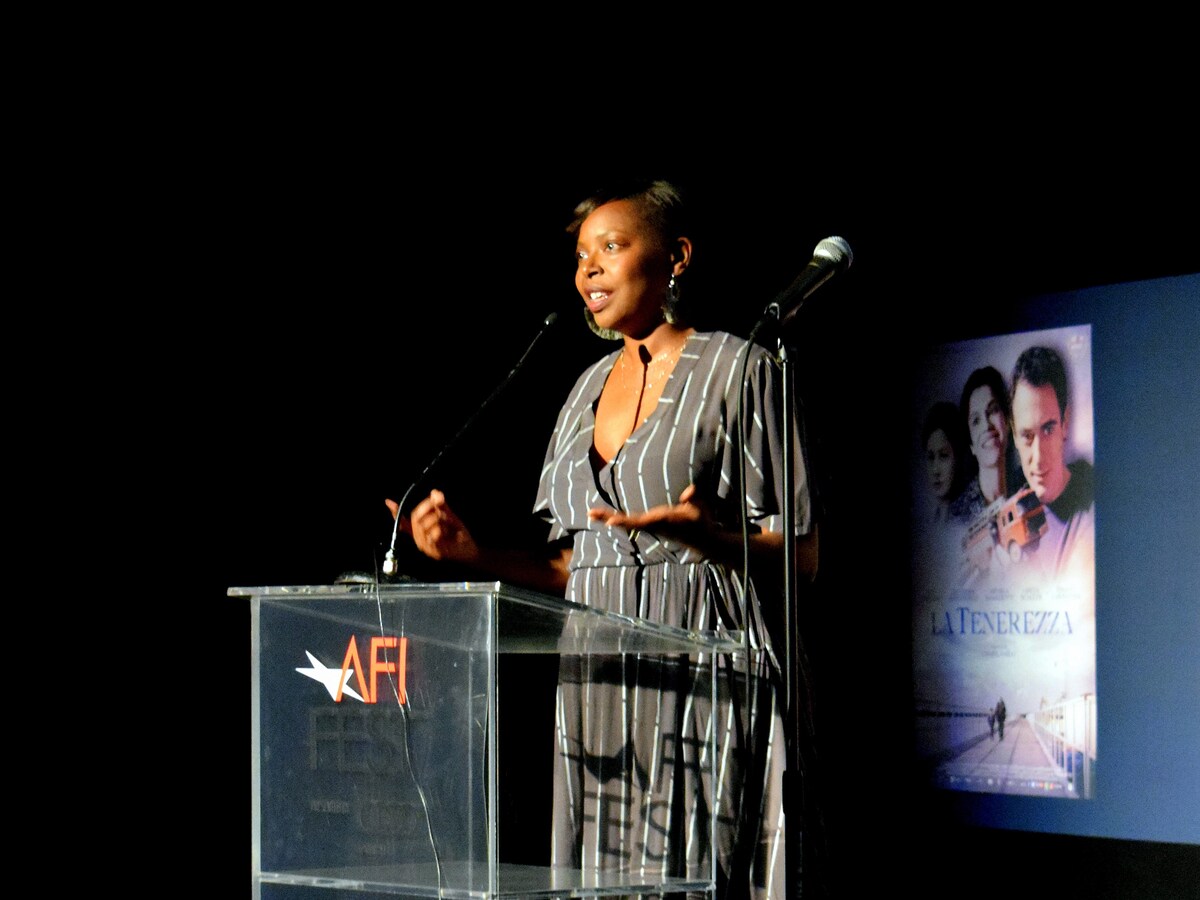
◼












